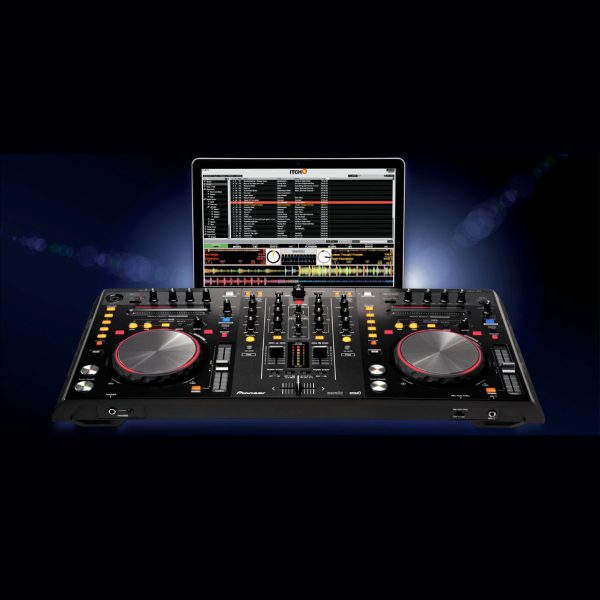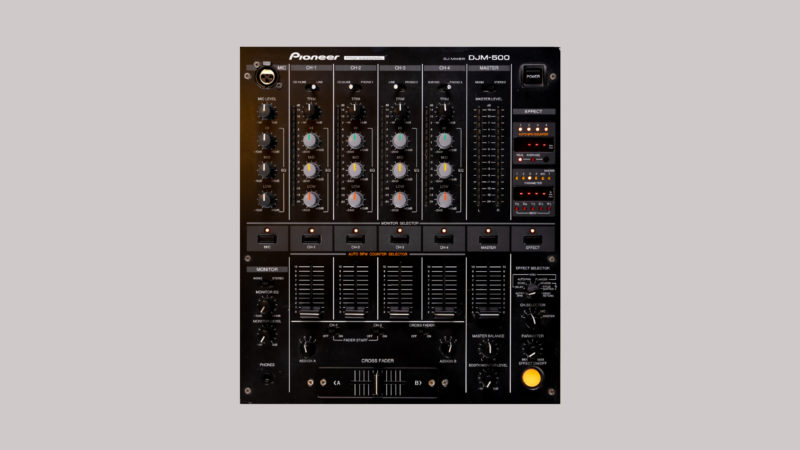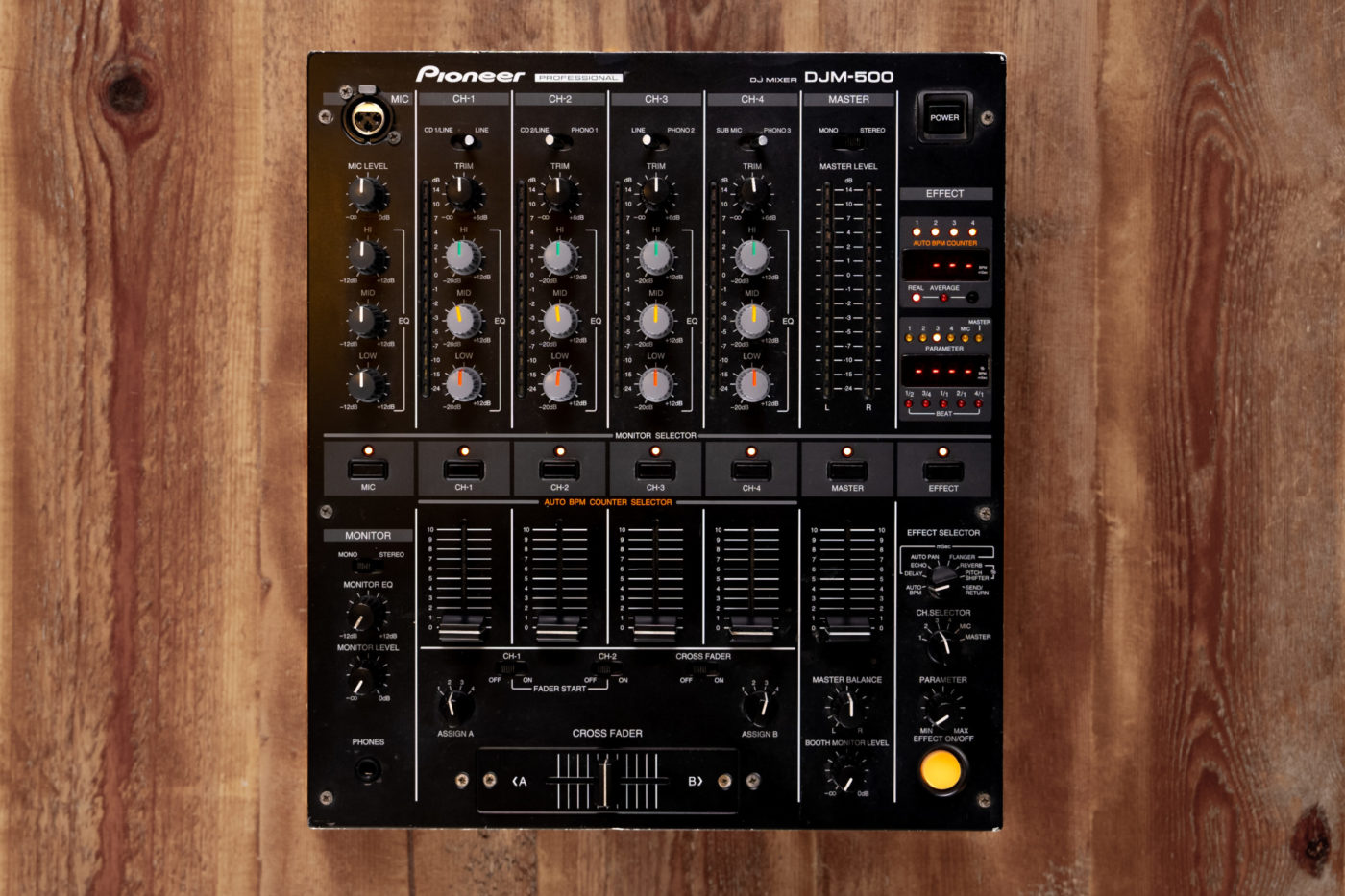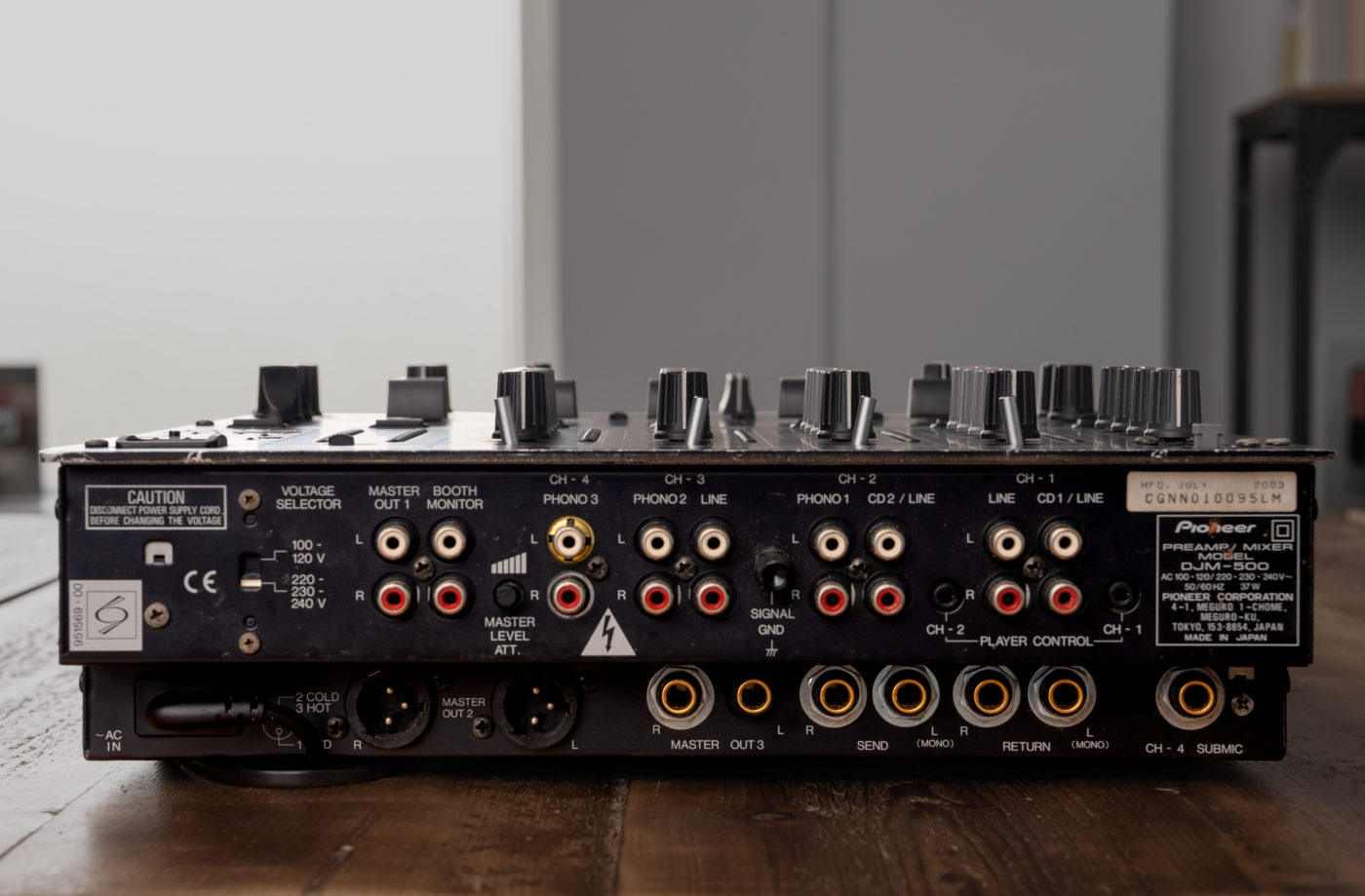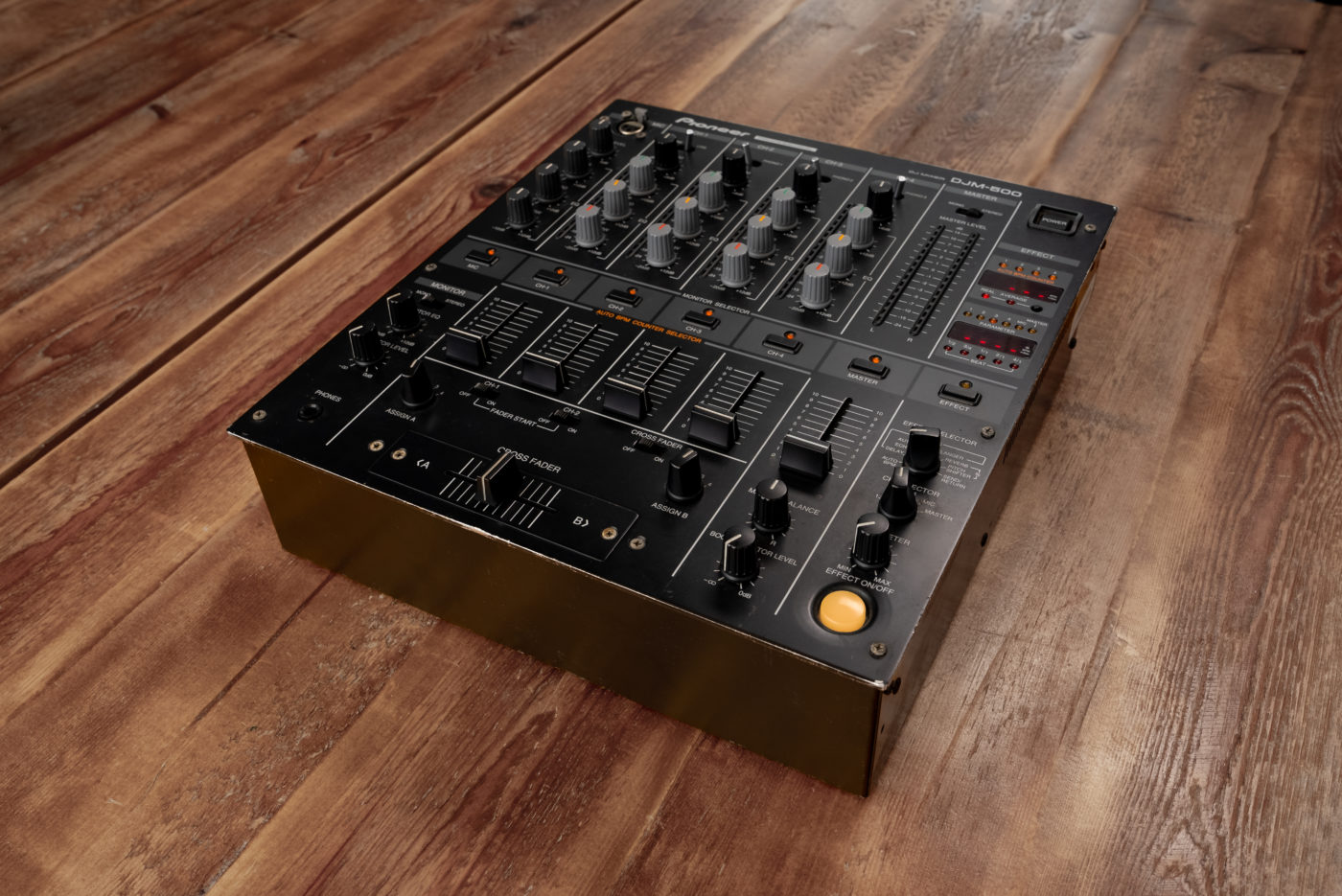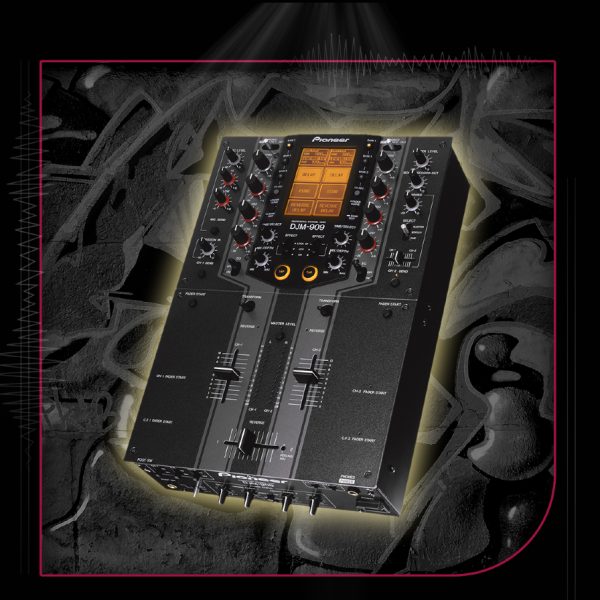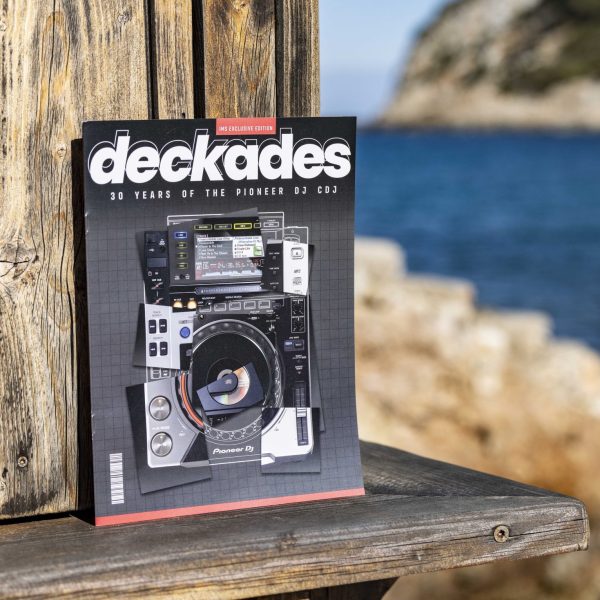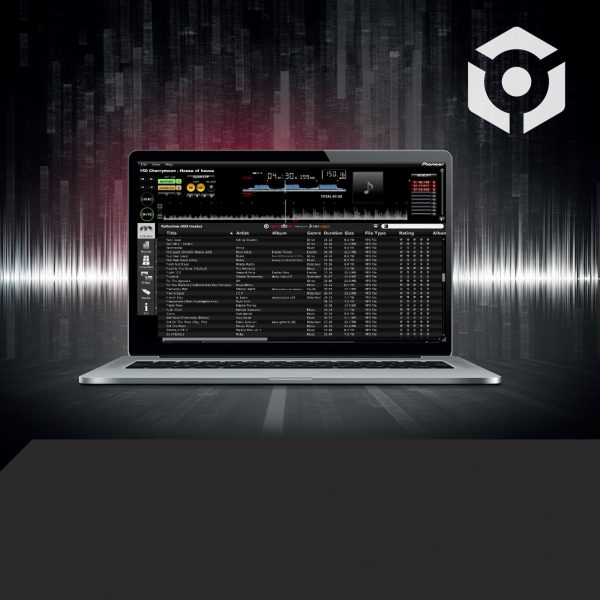During initial tests of the DJM-500, DJs weren’t as enthusiastic as Sanchez would eventually become. “When it came to whether DJs actually used the effects, they didn’t at first,” said Atsumi. “They didn’t know what they were doing at the first phase of the mockup. That was why we installed a BPM counter, so DJs could apply effects linked to the beat. In this way it is easier to incorporate effects into their performance. I thought that was when DJs would consider using it, if we could tell them, ‘You can apply a 1/2-note effect linked to the BPM.’”
It was originally hoped that the BPM counter could be a selling point of the mixer, making beatmatching easier and more accurate. But internally it was decided that the BPM detection wasn’t quite good enough. “Nowadays beat analysis by rekordbox is highly accurate and most people who play electronic music do not have any changes in BPM,” said Atsumi. “But back then there were many instrumental songs being played in addition to electronic music, so the conditions were even worse.”
Using the DJM-500 now, it’s not hard to see what Atsumi means. Aside from its general accuracy, the BPM readout tends to fluctuate throughout a track. And we now expect to measure BPM in values of 0.1, rather than the whole numbers the DJM-500 offers. But as a rough guide to get your beatmatching in the right ballpark? The DJM-500 honestly isn’t too bad.
The views and feedback of professional DJs play an integral role in the design of Pioneer DJ projects, a practice that was established back in the days of the DJM-500. Atsumi and the team showed prototypes of the mixer to some of the DJs who’d been trialing CDJs, and they received important advice.
“There are trim, EQ, cue buttons and all sorts of things on a mixer, and they had to be laid out properly and correctly vertically and in line with the flow of sound,” said Atsumi. “There were mixers with four cue buttons on the left, but the feedback from DJs was that it was correct to lay them out in line with the flow of the sound. It’s basic now, but through hearing from DJs we could create something easy to understand and use. We were able to get feedback from DJs who shared our desire to make something easy to use, good and interesting.”
This design input from DJs no doubt helped make the mixer a popular new option in the booth. House, techno and mobile DJs in particular warmed to the DJM-500, appreciating its simple layout, compact width and effects. “What made the DJM-500 revolutionary,” Sanchez said, “was adding that level of detail to effects. And then in addition, having the EQs on each of the channels, which gave a lot more control over the frequency, and just allowed me to be more creative in how I constructed my sets.”
